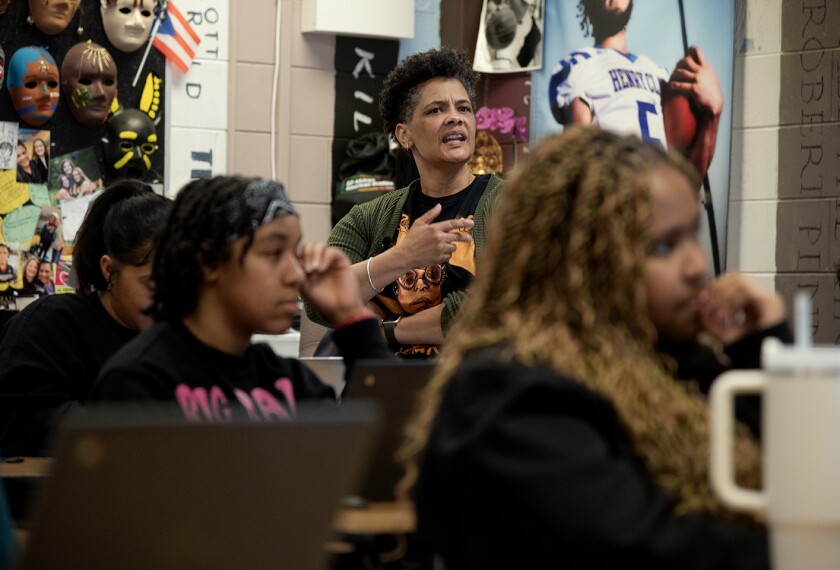District officials should take a critical approach to evaluating products and services in the marketplace of for-profit online courses, experts on that growing segment of education say.
There are pluses and minuses, they say, to doing business with online-learning companies, and officials should be just as judicious as they would in purchasing any other service.
“By and large, we look at these companies the same way we would others,” said Themistocles Sparangis, the chief technology director for the 678,000-student Los Angeles Unified School District. “We ask, ‘What makes good educational business sense?’ and ‘How are we assured our investment is doing what it’s supposed to do?’ ”
For more information on the business of e-learning, read:
Districts have become accustomed to dealing with the for-profit sector in their purchase of everything from copiers to telephone systems. But buying online courses for students to use can bring another layer of complexity to the decisionmaking process.
School officials may believe a for-profit company in the classroom could bring added customer service or a higher-quality product, since the company needs to keep customers happy to make money, said Michael T. Moe, a partner in NeXtAdvisors, an education-focused merchant bank in Chicago that advises and invests in companies.
On the other side of the coin, some administrators may feel that if a company’s primary objective is profit, the educational aspects of its mission could be skewed.
Both can be true, or neither, Mr. Moe said. “Over time, the distinction between for-profit and not-for-profit can become irrelevant,” he said. “Today, if you go to a hospital, you don’t know if it’s for-profit or not-for-profit. What you think about is the track record and quality.”
The same should be true for educational materials and services such as online courses, he said.
Jan Streich, the director of instructional technology for the 24,200-student Spotsylvania County public schools in Virginia, agrees.
Ms. Streich said her district has worked closely with Virtual Virginia, the state education department’s provider of online courses. But the district has also forged a close relationship with the for-profit online-course provider Aventa Learning.
We look at these companies the same way we would others. We ask, ‘What makes good educational business sense?’ and ‘How are we assured our investment is doing what it’s supposed to do?'
Ms. Streich said she signed a contract with Aventa Learning because the company provided online credit-recovery courses the district couldn’t get through Virtual Virginia. The district also examined the quality of the Aventa courses and teachers, the courses’ alignment to the Virginia curriculum, and the company’s flexibility and willingness to customize its products and services.
The process for assessing Aventa’s offerings wasn’t much different from the process school officials take when evaluating the product of a nonprofit organization, Ms. Streich said. Price matters in both cases, she pointed out, and quality matters in both cases.
“Our main focus was to meet the diverse needs of our students,” she said.
Setting Clear Expectations
When dealing with for-profit education providers, school districts should look at the longevity and stability of a company, its commitment to customer service, and the educational quality of the product, experts in the field advise. District officials should do their homework, as with any purchase, including talking to others who have done business with a company under consideration.
That’s the route Mr. Sparangis said he follows in the Los Angeles district, which uses a mix of online course providers, including state-affiliated, nonprofit organizations and for-profit companies, such as Seattle-based Apex Learning.
The district goes through an evaluation of curricular materials, Mr. Sparangis said, and then overlays that with the district’s business practices. But that doesn’t always mean the lowest bidder is the company that’s hired, as it might be when looking at a transaction that doesn’t involve educational materials.
What’s critical is to have a clear expectation of what the district hopes to achieve with the service or product, he said, and to make sure the company meets that expectation.
“When we’re open and direct and clear about what we’re doing together,” Mr. Sparangis said, “then we have a really good system.”




